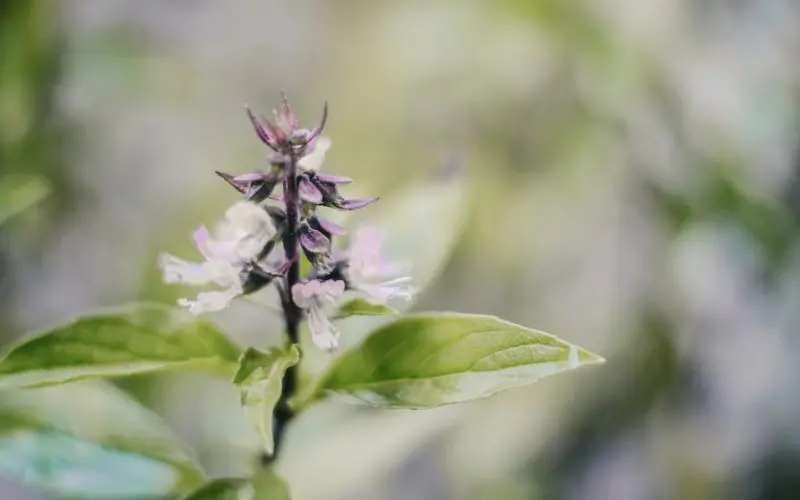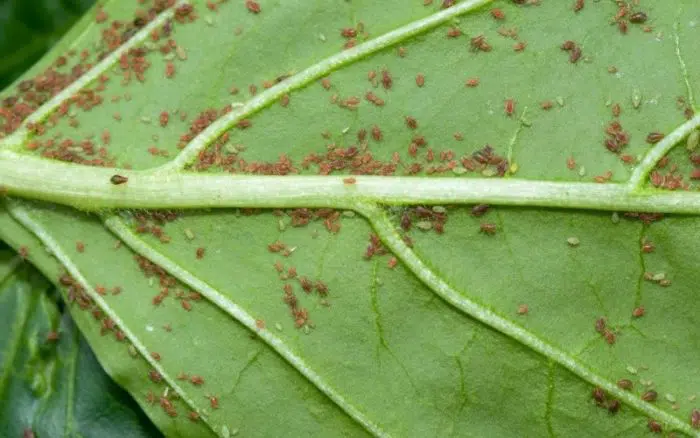I love growing basil, it makes so many dishes taste amazing. But sometimes it gets a little finicky and starts wilting out of nowhere.
Why Is My Basil Plant Wilting?
Wilting basil is usually caused by dry soil. If you skipped a few days of watering, your wilting basil plant might just need some water to get back to normal.
If your basil starts withering it might just be that it’s thirsty!
However, there can be other reasons such as hot weather or being in a pot that is too small. Basil requires fluffy but moist soil in order to thrive- if it doesn’t get enough water, then you will notice drooping leaves (or even an irreversible browning).
The Main Causes of Wilting Basil
There are a few reasons you may have ended up with not so healthy basil plants. Let’s get into each one that might cause basil plant drooping or the leaves to wilt.
1. Not Enough Water
The best way to avoid wilting basil is by regularly watering it. This is one of the most common issues when it comes to growing basil, which is why I put it first.
Basil loves when you keep the soil moist, so if the soil is consistently dry, you’re going to want to add more water than you have been.
Watering basil should become a daily habit for you, and even if you don’t water it every day, you want to check the soil every day. Put your finger into the top inch or two of soil.
- If you don’t feel any soil moisture, go ahead and water it.
- If the soil is moist you can skip that day and check it again tomorrow.
As temperatures and your environments change, some weeks it might need frequent watering, and some days it wont need any.
But How Often Should You Water Your Basil Plant?
It’s going to depend on the climate where you live, the temperature that day (if your plants are outside), the humidity, all kinds of things.
The best way to tell if it’s time to water your basil is to check the soil. If it’s dry, go ahead and give it some water. If it’s still damp, check again later in the day or the following.
Basil needs around an inch of water per week, potentially 2 inches if it’s a really hot week. That might not seem like a lot, but it’s more than you think. Making sure your basil plant gets enough water is crucial to having a good, long harvest.
2. Too Much Water / Soggy Soil
New gardeners (and even gardeners who know what they’re doing), often overwater plants. We get excited about growing our own food and are constantly looking at the plants making sure they’re okay.
“Oh, he’s a little dry, let’s just water it a tiny bit!”
And then this happens multiple times a week without letting the soil dry and your plant ends up with wet feet and you find fungus gnats flying around. The root system could end up completely submerged in water without you even realizing it.
I’m guilty of this too.
Poor drainage can make the problem worse, especially when growing basil indoors. You should put potted basil in a container with drainage holes so that the plant can stay hydrated and not have stagnant water sitting in its roots or leaves. Thin plastic pots that are used to grow seedlings in are usually okay.
This could lead to brown or yellow leaves, cause root rot, or lead to fungal disease.
Let the soil dry out a bit before you water it next time. It may even require you to swap out the soil if it’s just too damp.
3. Not Enough Sunlight
Basil plants need at least eight hours a day of ample, direct sunlight. While most people just put their basil in a south-facing window, if the window sill doesn’t get enough it could cause some issues.
While not enough light for a plant indoors usually just leads to stunted growth or slower-growing basil plants, it can cause the leaves to wilt if the problem is prolonged.
Adding grow lights into the space if you’re growing indoors can be a huge help in returning your basil back to a healthy plant.
4. Using the Wrong Soil
If the basil leaves start to wilt and you have the watering nailed down to a science, then soil could be the culprit. Basil likes loamy soil that allows its roots to easily move around and dig down.
If you aren’t using a quality potting soil it might end up holding way too much moisture and not drain well, similar to boggy soil. Alternatively, it could be sandy soil that drains almost too well and the soil dries out quickly.
One option would be to re-pot your basil plant in a well-drained pot or container with fresh loamy soil.

5. Not Pruning & Letting It Flower
Not pruning your basil plant will eventually lead to it growing flowers. Once the flowering stage has started, the basil leaves will change the flavor and become a little more bitter than what you’d expect.
If you let the basil flower it will go to seed and you will no longer get new leaf growth on your plant. Once it flowers, the plant prioritizes the flowers and stops delivering water to the leaves, which will cause them to wilt.
6. Not Hardening Off Your Plants
If you’ve started your basil plants indoors, there’s a very important step you don’t want to miss in the process – and that’s the hardening off period.
Think about it – plants started indoors are grown in the ideal soil, the ideal temperatures, and the optimal amount of light. If you simply plant basil outside the next day, they would have a very tough time acclimating to the elements.
Newly transplanted basil needs some time to get used to this new environment. If they’re placed outside on a clear, hot day, you may end up with some burned looking leaves.
Make sure that when providing sun exposure for your plants, they are sheltered from intense sunlight which can cause the basil’s foliage to wither and become discolored. It might also work if you move them out of direct light during summer heatwaves!
Cloudy days are a great time to start hardening off your plants, a period that can take 7-14 days.
Sometimes its the heat, not the sunlight that impact the transplanted basil, and this could appear as basil wilting leaves.

7. Pests & Unwanted Problems
While basil is generally thought of as one of the ultimate companion plants because it prevents many pests, there are still some that impact basil plants.
Aphids, flea beetles, and whiteflies are just some of the destructive pests that basil encounters.
Aside from root rot, basil can experience fusarium wilt or basil wilt, downy mildew, and bacterial leaf spot disease.
Fixing Your Wilting Basil Plant
If you notice you have a wilted basil plant, the most likely problem is that your soil is too dry. Otherwise, you may have overwatered the plant and its roots aren’t getting enough oxygen. Let the plant dry out for a few days and you should see some improvement.


